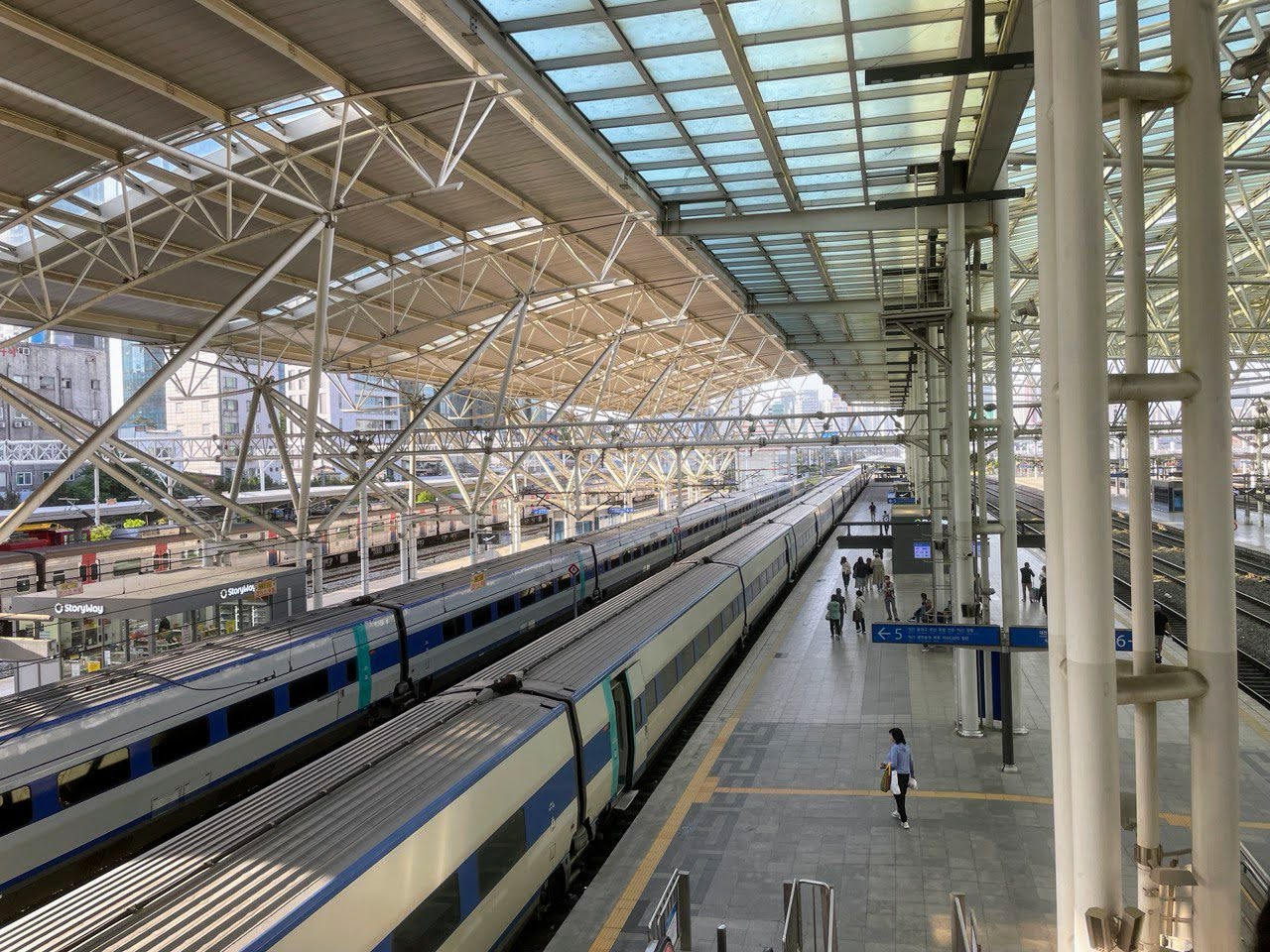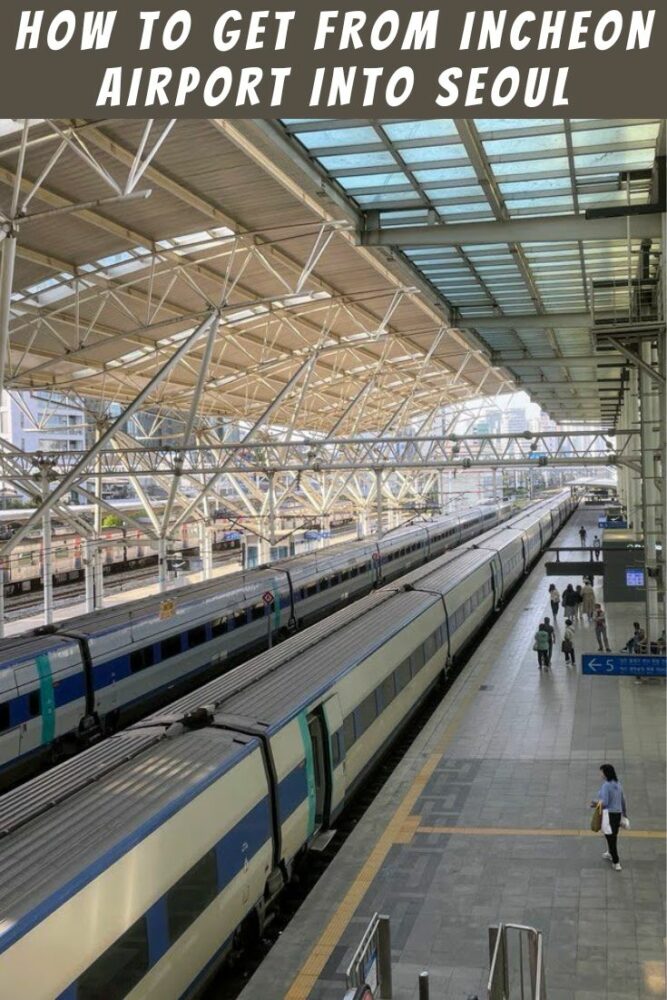How to Get From Incheon Airport to Seoul
Articles on this site contain affiliate links, meaning I may be compensated if you buy a product or service after clicking them. The full privacy & disclosure policy is here.I absolutely love spending time in Seoul. From the food scene to the history, the fashion and K-Pop to all of the green space, this sprawling metropolis is incredibly diverse and always changing.
I’ve written quite a bit about the city and the rest of South Korea elsewhere, so today I’m focusing on something that’s a big part of almost every tourist’s experience, yet was surprisingly hard to get useful information about before I visited.
Seoul has two international airports: a few flights from nearby countries land at Gimpo, but everything else arrives into Incheon. The thing is that Incheon is actually a city in its own right, and the airport is about 55km from downtown Seoul.
That means its worth spending a few minutes understanding your transport options, how to pay for them, and how to navigate around, since the best way of getting in from the airport will differ based on your budget and where you’re staying.
Here’s what you need to know.
Let’s Talk About Money
If you’re going to use public transport in Seoul or other major centres in South Korea, you’ll want to get familiar with T-Money cards. These stored-value cards let you pay for the metro, buses, and taxis, as well as at convenience stores, vending machines, and anywhere else you see the T-Money logo.
If you’ve ever used a contactless transport card elsewhere in the world, like the Oyster card in London or Myki in Melbourne, T-Money works in much the same way. You pay a small amount for the card then add money to the balance, which gets reduced every time you use it. You can’t tap your debit or credit card on the reader: it has to be T-Money.
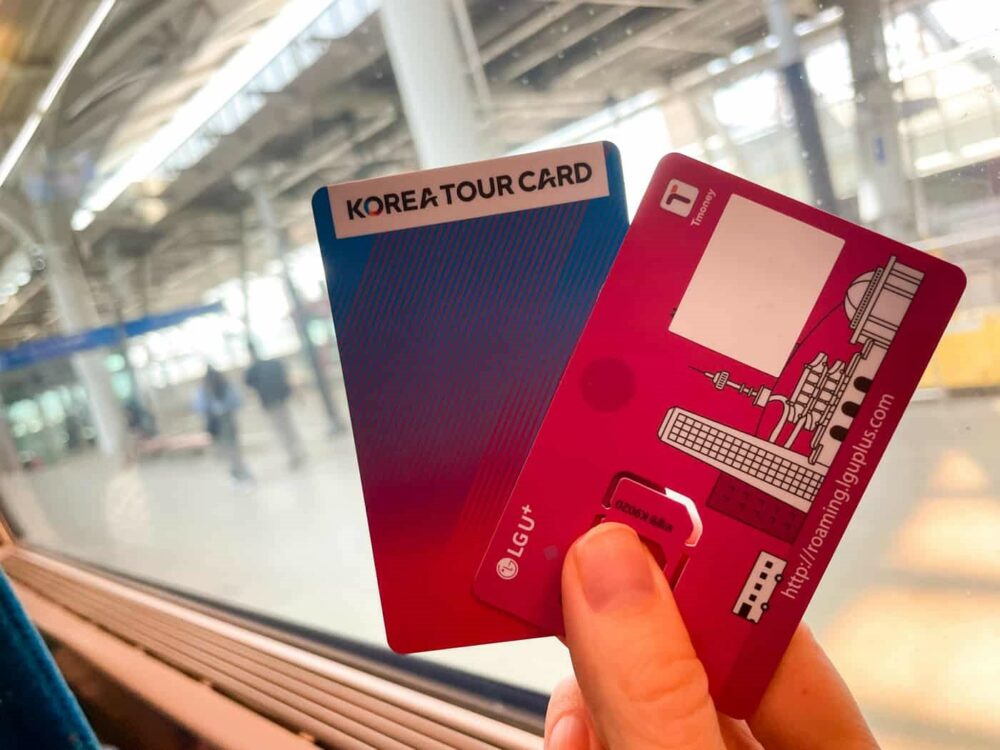
You can buy the card at convenience stores inside Terminal 2, or from dedicated machines on level B1 of either terminal. Usefully, if you buy an LG U+ SIM card at the airport (it’s cheaper and quicker to order it in advance), the plastic SIM holder is also a T-Money card. That’s what I did last time, avoiding the need to buy one separately.
If you haven’t got one somewhere else, you can buy a T-Money card from machines beside the turnstiles for the All-Stops train mentioned below. The cards in these machines are a special “Korea Tour” version, which cost a bit more (₩4000 vs ₩2500) but include a range of discounts on tourist attractions, entertainment, and overpriced restaurants.
Either way, you’ll need to top your card up before leaving the airport if you want to use it to get into the city. Annoyingly the reload machines only take cash, not card, but there are plenty of ATMs inside the terminal and several money exchange counters.
Below I talk about which methods of transport accept T-Money (most of them) and how much they cost. I got through about ₩30,000 ($22.50 USD) on my card in a week. Note that the machines where you initially buy the cards and the ones you use to add money to them aren’t the same, but they’re basically beside each other.
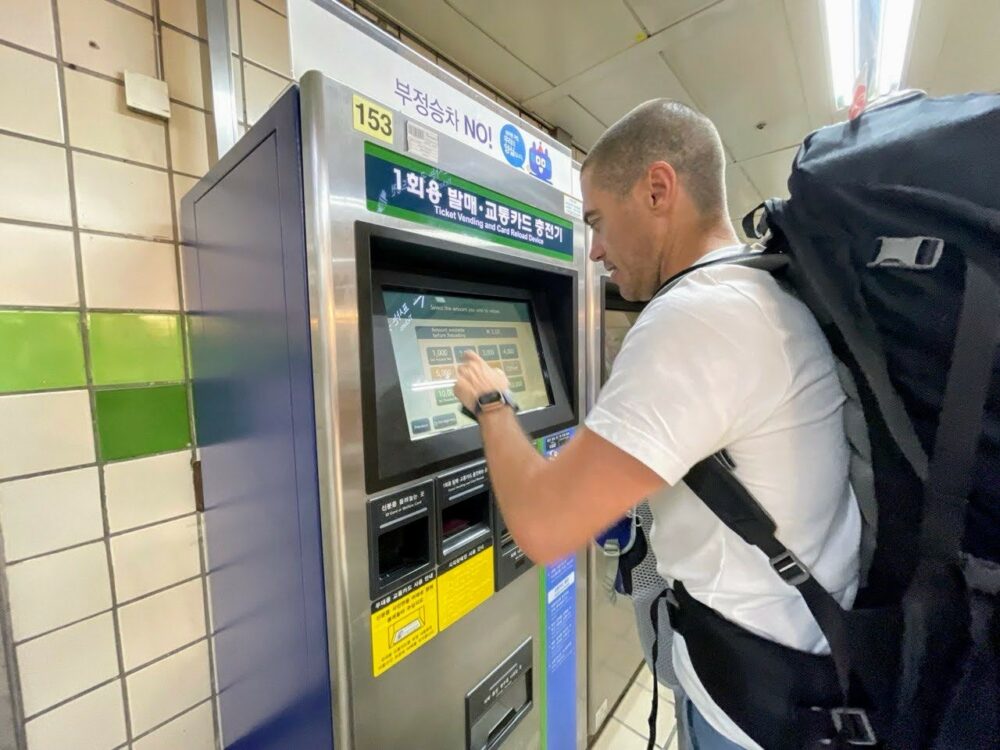
Navigation Apps
Just a quick note here on finding your way around the public transport system, not to mention the rest of the city. Google Maps and Apple Maps are essentially useless in South Korea: strict government regulations mean that they can’t provide walking or driving directions. Even if your destination is half a block away, they’ll tell you to take a bus or metro to get there.
Instead, I’d highly recommend downloading one of the local navigation apps instead. Naver Map and KakaoMap are the most popular options by far: of the two, I preferred Naver and ended up using it most of the time. There’s a real-time tracker for buses and trains, and you can see the cost of all of the different public transport options when deciding which to use.
You’ll need a data connection to use either of these apps. Last time I was in the country, I used this SIM card, while my partner used this eSIM. They both worked well, with fast and reliable service everywhere we went.
Ok, with that out of the way, let’s look at the options for getting from the airport!
AREX All-Stops Train
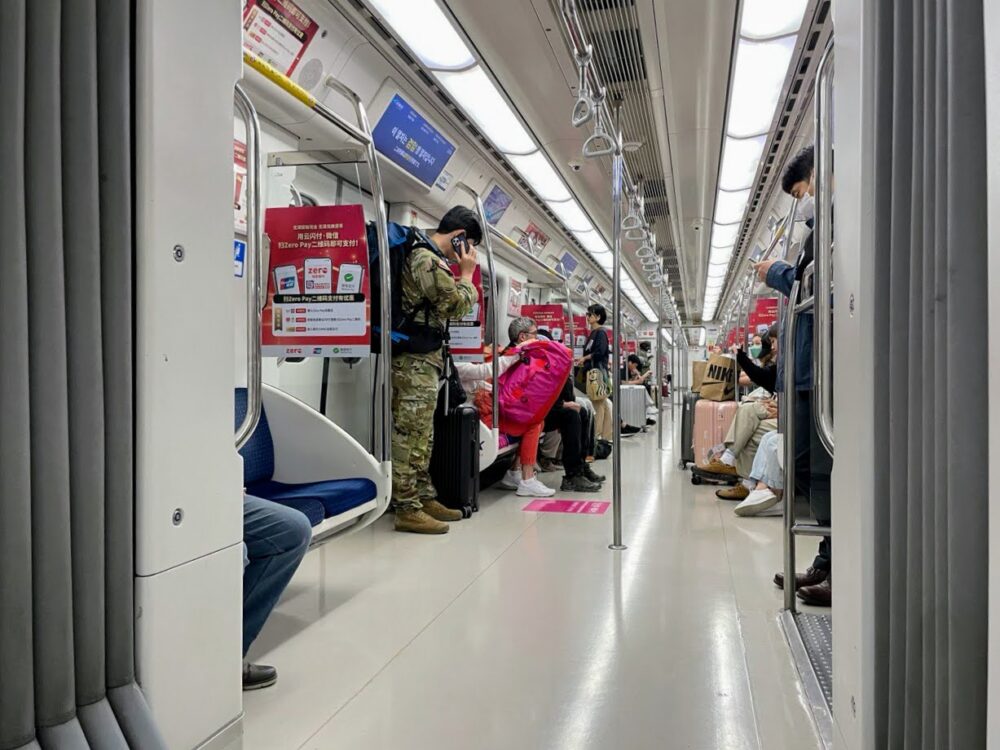
The cheapest way to get into the city is to just jump on the “All Stops” train. This commuter service on the AREX line runs from both terminals at Incheon to the central city, calling at Gimpo airport and several other stations on the way. It costs ₩4450 ($3.30), takes roughly an hour to get to Seoul Station, and leaves every 23 minutes from early morning until almost midnight.
This is how I get between Incheon and Seoul: not only does it save money, but it stops at useful intermediate stations like Hongik University (Hongdae), and lets you transfer to several other lines without having to go all the way to Seoul Station first.
To find the train, head down to floor B1 in either terminal. Train icons and signs in English point the way, so it’s not hard to find. Just make sure you’re headed for the All-Stops train, not the Express service that’s also run by AREX. Once you’ve got yourself a T-Money card and loaded it up with credit as above, just tap it on the reader and head down to the platform for Seoul-bound trains.
There’s an area at the end of each carriage to store suitcases and large backpacks, although it can get full if the train is busy. If so, you’ll just need to stand with your luggage, or try to fit it in front of your seat without blocking the aisle too much. At least one of the turnstiles at the airport, Seoul Station, and most intermediate stops are wider to accommodate walking through with luggage.
AREX Express Train
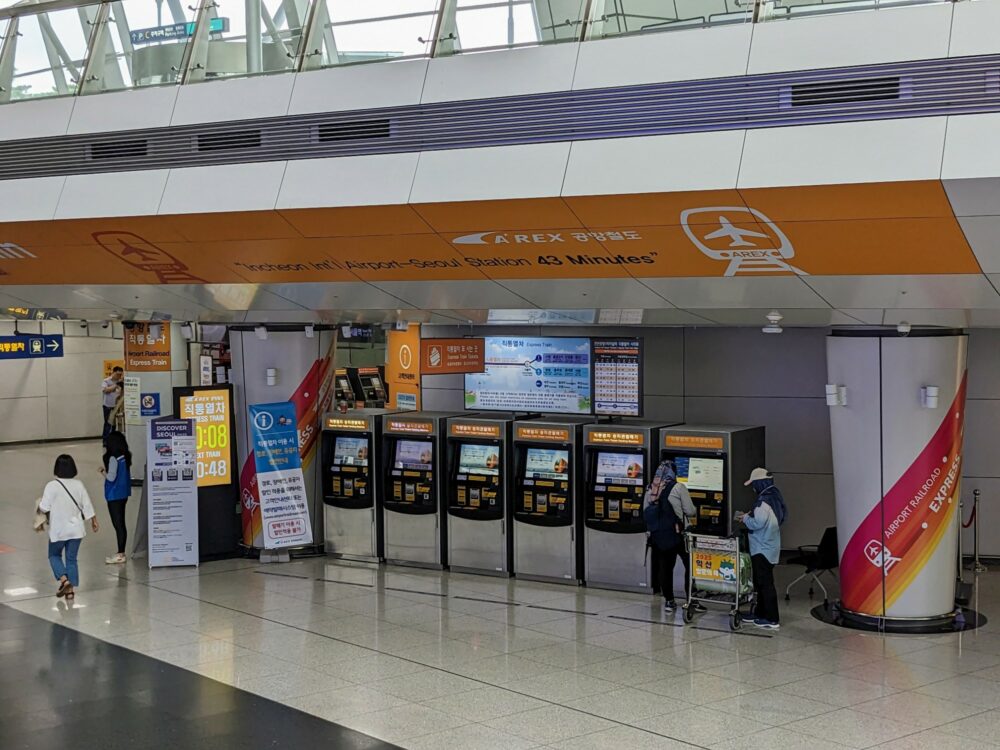
There’s also a fancier Express service that runs directly from the two Incheon terminals to Seoul Station. It runs a bit less often, costs noticeably more, and saves about 15 minutes. It might be worth it if you’re in a huge hurry or have a lot of bags (there’s more luggage space on these trains), but otherwise I personally wouldn’t bother with it.
I especially wouldn’t recommend it if you’re staying in Hongdae or anywhere serviced by metro lines 2, 5, 6, or 9, since it’s quicker to get off at one of the intermediate stations on the All-Stops service and transfer as needed. The express service runs every half-hour from early morning until around 10:45pm.
A ticket costs ₩10,500 ($7.80 USD), plus a ₩500 deposit for the physical card. You can buy them from the information desks or at the Express ticket machines (not the All-Stops ticket machines) near the platforms. Just follow the signs for the Express train once you’ve collected your bags, down to level B1 of either terminal.
The deposit refund machines are beside the ticket machines at either end: just follow the prompts and insert your card to get your deposit back.
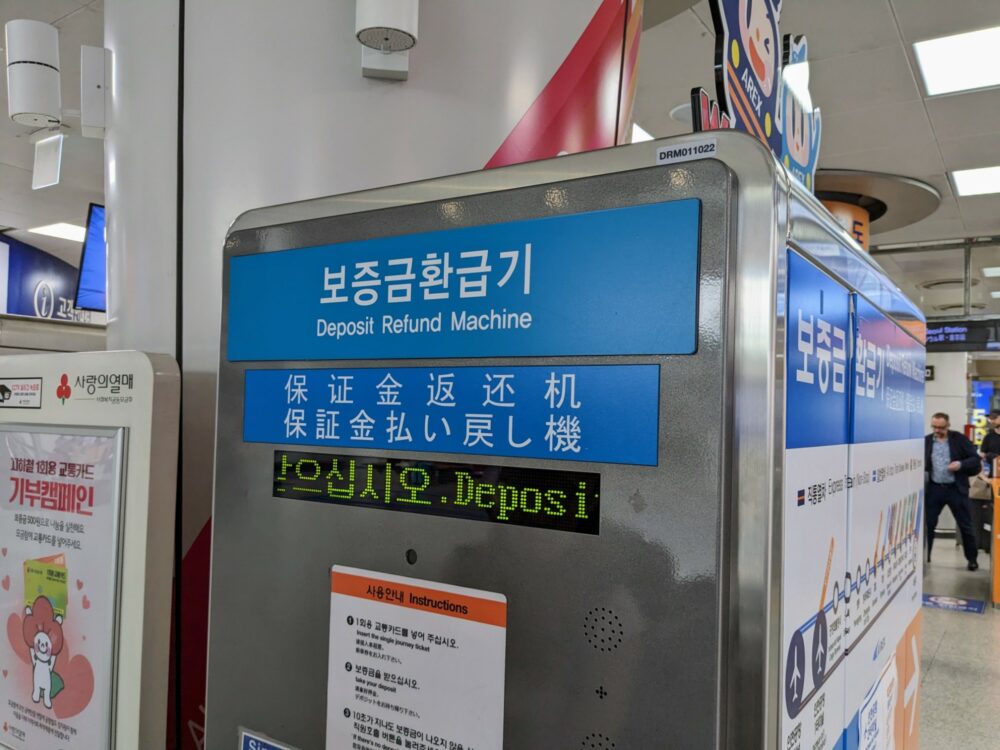
K Airport Limousine Bus
A “limousine” bus runs between both Incheon passenger terminals and different parts of Seoul, stopping at major hotels and a few metro stations along the way. There are currently four different routes, including the 6701 that goes through Myeongdong and 6703 that runs to Gangnam, plus two late-night services. You can find the full list of stops for the various lines here.
These buses are the most expensive public transport option, and only really useful if you’re staying at or very near one of the places they happen to stop. On the upside, if you are, there’s lots of room for luggage underneath, and you don’t need to do a lot of thinking after a long flight. Just get on at the airport, and get off when your stop is called (in English and Korean). There’s free Wi-Fi onboard so you can monitor your progress.
You’ll pay ₩18,000 ($13.30 USD) for a ticket, which you can get from the ticket counters in both terminals. In Terminal 1, there’s a ticket counter inside near exit door 4: that’s the best one to use, since it’s right beside where the bus leaves from. There are also several ticket counters along the curb outside. For Terminal 2, head down to the Transportation Centre on level B1: the counters there are clearly marked.
You can pay using card, T-Money, or cash, or if you’re the organised type, save ₩1000 by buying a mobile ticket in advance. Wherever you get them, the tickets are valid on any route.
Once you have your ticket, head to Bays 3B/4A on the ground floor of Terminal 1 if you’re not already there, or Bays 17-19 at the Transportation Centre in Terminal 2 (floor B1). Buses on the standard services leave every 25-65 minutes depending on the route and time of day, while the night buses run every couple of hours from around 11:30pm.
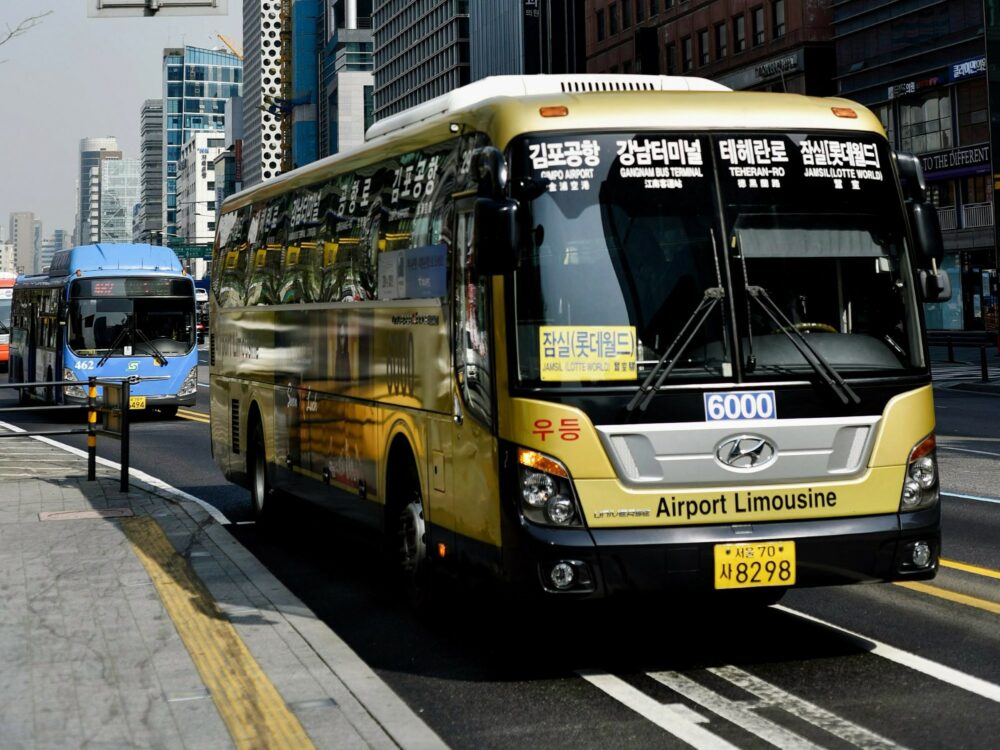
City Bus
While the KAL bus is the one you’ll see advertised around the terminal, you’ve also got the option of taking a standard city bus. These can be a bit cheaper than the limousine service, depending on where you’re staying, and might get you closer to your accommodation as well. As with the limousine service, there are luggage compartments underneath where anything larger than a carry-on will go.
You buy tickets from the same counters as the limousine bus, or onboard using cash or T-Money. The latter is much more convenient, especially when there’s a line of people behind you waiting to get on. If you don’t want to use T-Money, I’d recommend buying your ticket from the counters rather than the driver to save time.
With around 30 buses running between Incheon and different parts of the city, there can be a bit of work involved in figuring out which bus to take and where it leaves from. The fare is also based on distance: as an example, the 6011 bus that runs past Gyeongbokgung Palace costs ₩17,000 ($12.60 USD).
I’d highly recommend downloading Naver as mentioned above: not only does it tell you which bus route you need and how much it costs, but you can use the live tracker in the app so you can see when the next bus is due. You can also ask customer service staff if you’re struggling to figure out where you need to be.
Airport Taxi
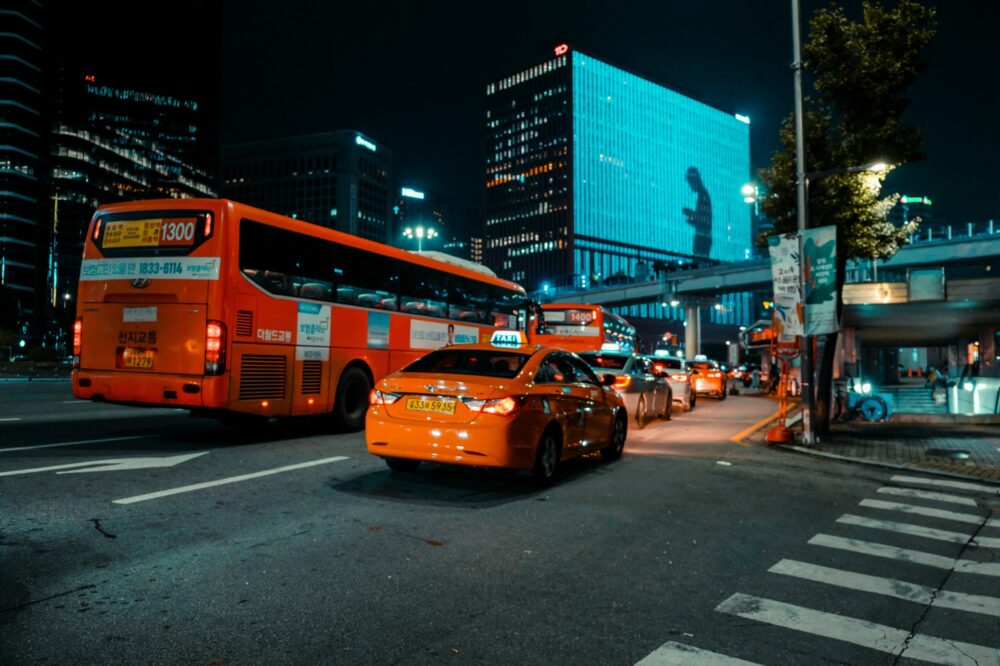
Taxis are a convenient option for getting into Seoul, but they’re an expensive one as well. Depending on where you’re staying and how bad traffic is, it’ll take anywhere from 45 minutes to an hour and a half or more to get to your accommodation.
For a standard taxi that can take up to four people (without a lot of luggage), you’re looking at around ₩55,000 ($41 USD) to get into the middle of the city if you don’t hit traffic, plus tolls of around ₩3000-5000. A deluxe taxi that’s more comfortable costs close to double that, and likewise with a “jumbo” deluxe that’s a larger vehicle best suited to groups of more than four people.
You’ll also pay extra for an “international” taxi, where the driver is guaranteed to speak English and perhaps other non-Korean languages as well. The price is fixed and zone-based for international taxis (around ₩75,000/$55 USD to the central city, including tolls), while other types are on the meter. There’s a 20% late-night surcharge between midnight and 4 a.m.
Scams are extremely unlikely as long as you’re in an official taxi, so follow the signs in the terminal to head to the designated ranks. In Terminal 1, they’re between exit doors 4 and 8 on the ground floor, while for Terminal 2, they’re between exits 1 and 5. Ignore anyone who approaches you to offer taxi services; they’re almost certainly unlicensed and unregulated.
There are usually airport staff on hand alongside the waiting areas to answer questions and direct you to the right taxi. Some drivers can accept foreign credit or debit cards for payment, but not all: make sure you’ve got more than enough cash to pay the expected fare in case you need it.
Ride-Sharing
Ride-sharing services like Uber and Lyft, where drivers pick you up in their private vehicles, don’t exist in South Korea. Instead, apps like Kakao T and Uber (renamed to UT) just call a standard taxi for you instead. They can still be useful once you’ve got into Seoul, but there’s no real benefit to using them at the airport versus just heading to the taxi line.
So there you have it, all the ways to get from Incheon airport into Seoul! Leave a comment below if you’ve got any questions, otherwise I hope you have a great trip!
Airport limousine bus image via Thierry Chabot, taxi image via Wesley Shen, other images via author

